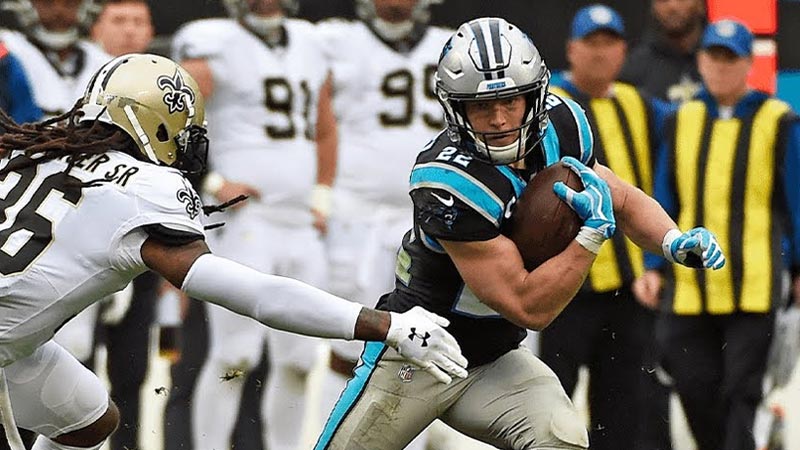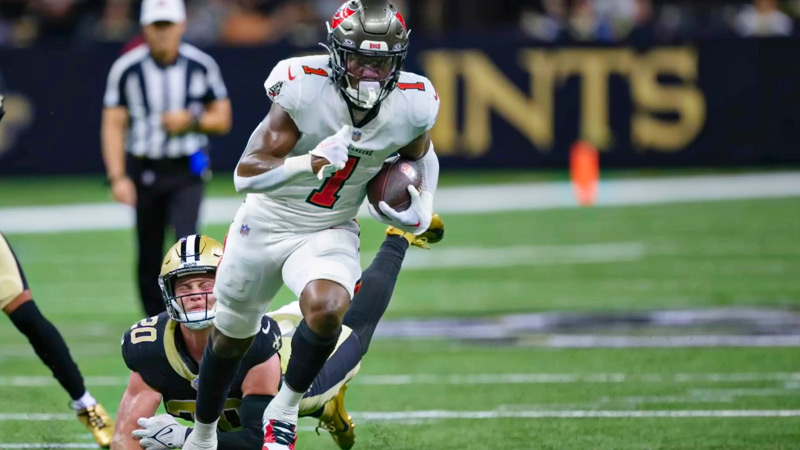In the realm of football, statistics are more than mere numbers; they are the very heartbeat of the game. The NFL, the pinnacle of professional football, thrives on the meticulous tracking and analysis of various statistics that capture every nuance of player and team performance.
From yards gained to touchdowns scored, these stats provide a comprehensive and dynamic lens through which we understand the sport. They paint a vivid picture of the athleticism, strategy, and drama that unfold on the gridiron week after week.
Understanding the different stats in the NFL is akin to deciphering a complex code that reveals the essence of the game.
From passing and rushing stats that measure offensive prowess to defensive and special teams stats that highlight skill and tenacity, each category tells a unique story about the players and teams that grace the field.
Join us as we embark on a journey to explore what are the different stats in the NFL that define the NFL and its enduring legacy.
What Are The Different Stats In The NFL?
The different stats in the NFL are the numerical measures of the performance and achievements of the players and teams in various aspects of the game. Some of the most common and important stats are:
Passing stats
These are the stats that reflect the passing ability and efficiency of the quarterbacks and other players who throw the ball.
Some of the passing stats are pass yards, pass attempts, pass completions, completion percentage, pass touchdowns, interceptions, passer rating, yards per attempt, first downs, etc.
Rushing stats

These are the stats that reflect the running ability and effectiveness of the running backs and other players who carry the ball. Some of the rushing stats are rush yards, rush attempts, rush touchdowns, yards per attempt, first downs, fumbles, fumbles lost, longest rush, etc.
Receiving stats
These are the stats that reflect the catching ability and productivity of the wide receivers, tight ends, and other players who receive the ball.
Some of the receiving stats are receptions, receiving yards, receiving touchdowns, yards per reception, first downs, fumbles, fumbles lost, longest reception, targets, etc.
Defensive stats
These are the stats that reflect the defensive ability and impact of the defensive linemen, linebackers, defensive backs, and other players who try to stop the offense.
Some of the defensive stats are tackles, tackles for loss, sacks, interceptions, passes defended, forced fumbles, fumble recoveries, defensive touchdowns, quarterback hits, etc.
Who Does The NFL Use For Stats?
The NFL uses different sources and methods for stats, depending on the purpose and the audience. Here are some ways the NFL uses stats:
NFL Next Gen Stats

This is a partnership between the NFL, Zebra Technologies, Wilson Sporting Goods, and Amazon Web Services (AWS) that provides clubs with data to analyze trends and player performance while enhancing the fans’ experience in-stadium, online, and during game telecasts.
The data is collected by RFID chips embedded in the player’s shoulder pads and the footballs and processed by AWS cloud infrastructure.
NFL Football Operations
This is the department of the NFL that oversees all aspects of the game, including officiating, rules, player safety, competition, and technology.
The NFL Football Operations website provides stats on various topics, such as scoring, penalties, injuries, replay review, officiating crews, etc.
NFL Media
This is the media arm of the NFL that produces and distributes content across multiple platforms, such as NFL Network, NFL.com, NFL Mobile, NFL Now, and NFL RedZone.
The NFL Media website provides stats on teams, players, games, standings, fantasy football, etc.
NFL Research
This is a team of researchers and analysts who provide information and insights to support NFL Media’s content production.
The NFL Research team uses data from various sources, such as Elias Sports Bureau, Pro Football Reference, Sportradar, and STATS LLC, to create stats packages, graphics, tweets, and articles.
Pro Football Focus (PFF)
This is an independent company that provides advanced analytics and grades for every player and team in the NFL. PFF uses a proprietary system of watching and grading every play of every game to generate stats on performance, efficiency, and value.
PFF also offers subscription-based services for fans, media, and teams.
ESPN
This is a leading sports media company that covers the NFL across multiple platforms, such as television, radio, digital, and print. ESPN provides stats on teams, players, games, standings, power rankings, projections, etc.
ESPN also has its analytics department that creates metrics such as Total QBR (quarterback rating), FPI (Football Power Index), and EPA (expected points added).
Pro Football Hall of Fame
This is a museum that honors the history and legends of the NFL. The Pro Football Hall of Fame website provides stats on hall of famers, records, milestones, awards, and history.
The Pro Football Hall of Fame also has its own selection committee that votes on the induction of new members based on their stats and achievements.
What Stats Matter The Most In The NFL?
There are many stats that can be used to measure and compare the performance of NFL teams and players, but some of them are more important and relevant than others.
Here are some kinds of stats that matter the most in the NFL:
Yardage stats

These are the stats that reflect the total number of yards gained or allowed by the offense or defense through passing or rushing the ball. Yardage stats indicate how effective and productive a team is in moving the ball or preventing the other team from moving the ball.
Some of the yardage stats are offensive yards per carry, offensive yards per attempt, defensive yards per carry, defensive yards per attempt, etc.
Points stats
These are the stats that reflect the total number of points scored or allowed by the offense or defense. Points stats indicate how efficient and consistent a team is in converting yards into points or preventing the other team from scoring points.
Some of the points stats are points per game, points per drive, points per play, points allowed per game, points allowed per drive, points allowed per play, etc.
Turnover stats
These are the stats that reflect the total number of times a team gains or loses possession of the ball through interceptions or fumbles. Turnover stats indicate how well a team protects and takes away the ball, which can have a huge impact on the outcome of a game.
Some of the turnover stats are turnover margin, interceptions, forced fumbles, fumble recoveries, defensive touchdowns, etc.
Efficiency stats
These are the stats that reflect how well a team performs on a per-play or per-drive basis rather than on a cumulative basis. Efficiency stats adjust for factors such as field position, down and distance, game situation, etc., and provide a more accurate measure of a team’s quality and potential.
Some of the efficiency stats are net yards per pass attempt, yards per rush attempt, first-down percentage, third-down percentage, red zone percentage, etc.
Advanced stats
These are the stats that use complex formulas and algorithms to analyze and evaluate a team’s performance based on various metrics and factors.
Advanced stats provide a deeper and more nuanced understanding of a team’s strengths and weaknesses, as well as their expected value and win probability.
Some of the advanced stats are expected points added (EPA), defense-adjusted value over average (DVOA), football power index (FPI), total quarterback rating (QBR), pro football focus (PFF) grades, etc.
Special teams stats
These are the stats that reflect the performance and contribution of the special teams unit, which is involved in kicking and returning plays. Special teams stats indicate how well a team executes and benefits from these plays, which can often make a difference in a close game.
Some of the special teams stats are: field goals made, field goals attempted, field goal percentage, punt return average, kick return average, punts inside 20, etc.
Situational stats
These are the stats that reflect how well a team performs in specific situations or scenarios that occur during a game. Situational stats indicate how well a team adapts and responds to different challenges and opportunities that arise in different phases of a game.
Some of the situational stats are scoring differential by quarter, comeback wins, one-score games, time of possession, penalties, sacks, explosive plays, etc.
FAQs
What are the primary offensive statistics in the NFL?
Offensive statistics in the NFL include passing yards, rushing yards, receiving yards, touchdown passes, rushing touchdowns, and receptions. These stats help evaluate the performance of quarterbacks, running backs, wide receivers, and tight ends.
What are the key defensive statistics in the NFL?
Defensive statistics encompass tackles, sacks, interceptions, forced fumbles, and passes defended. These stats measure a player’s ability to disrupt opposing offenses and make critical plays on defense.
What special teams statistics are tracked in the NFL?
Special teams statistics include punt return yards, kick return yards, field goals made and attempted, and punting averages. These stats assess the contributions of players on special teams units.
How are team statistics used in the NFL?
Team statistics such as total yards gained, total points scored, total yards allowed, and points allowed provide an overall view of a team’s performance on both offense and defense.
Are there advanced metrics used in the NFL?
Yes, the NFL employs advanced metrics like passer rating, quarterback rating (QBR), yards per attempt (YPA), and others to provide deeper insights into player and team performance.
Conclusion
In the NFL, statistics aren’t just numbers; they are the fingerprints of every player’s journey, the scorecards of epic battles, and the guiding lights for teams and fans alike.
These diverse stats, ranging from passing and rushing to defensive and special teams metrics, serve as a compass navigating us through the exhilarating world of professional football.
They reveal the strengths, strategies, and moments of brilliance that define each game, season, and career.
As we close this exploration into the different stats in the NFL, we’re reminded that football is not merely a game but a symphony of data, where every yard gained, touchdown scored, and tackle made adds to the intricate narrative.
These statistics bridge the gap between the physical and the analytical, enabling us to celebrate the athletes, coaches, and fans who make the NFL the cherished institution it is today.
So, whether you’re a die-hard fan or a casual observer, embrace the stats, for they are the true heartbeat of football’s enduring legacy.







